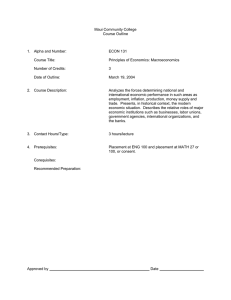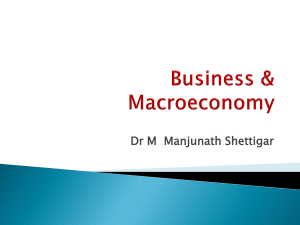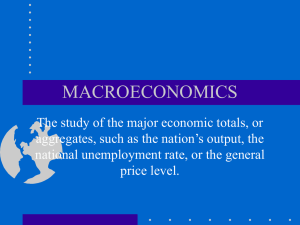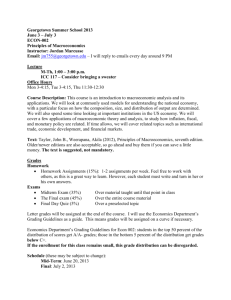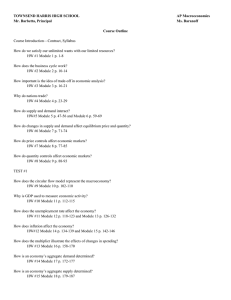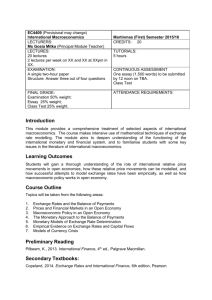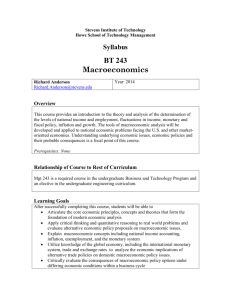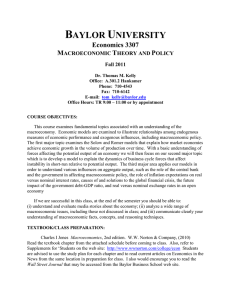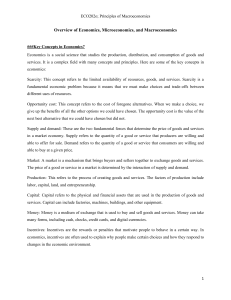College of San Mateo Official Course Outline COURSE ID: Semester Units/Hours:
advertisement
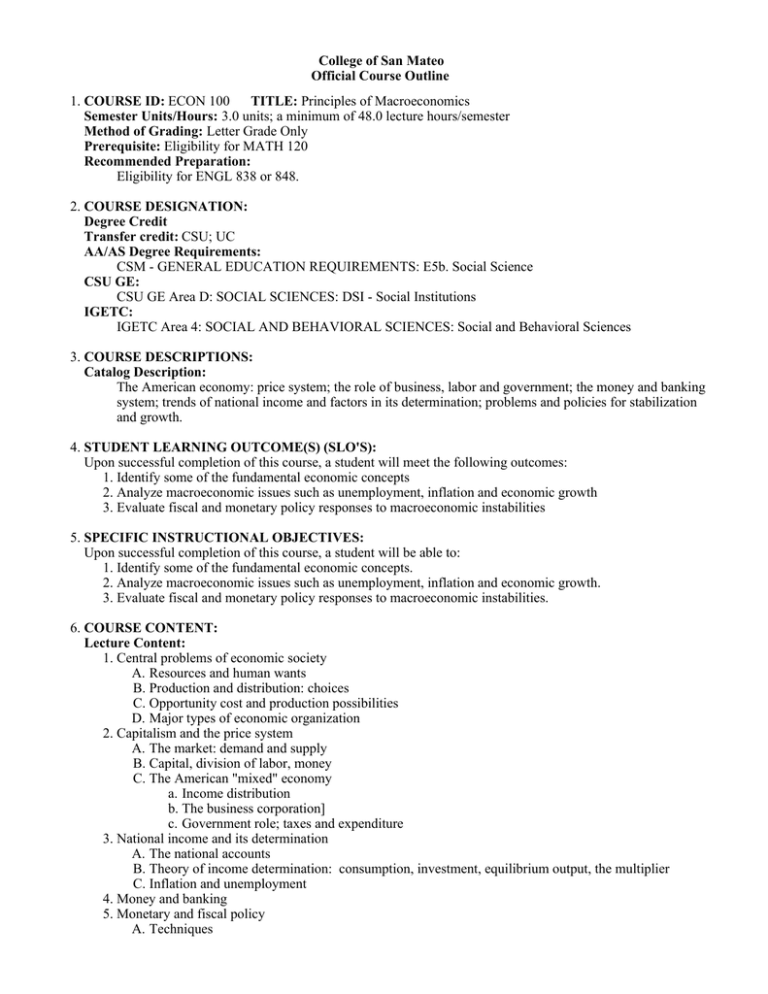
College of San Mateo Official Course Outline 1. COURSE ID: ECON 100 TITLE: Principles of Macroeconomics Semester Units/Hours: 3.0 units; a minimum of 48.0 lecture hours/semester Method of Grading: Letter Grade Only Prerequisite: Eligibility for MATH 120 Recommended Preparation: Eligibility for ENGL 838 or 848. 2. COURSE DESIGNATION: Degree Credit Transfer credit: CSU; UC AA/AS Degree Requirements: CSM - GENERAL EDUCATION REQUIREMENTS: E5b. Social Science CSU GE: CSU GE Area D: SOCIAL SCIENCES: DSI - Social Institutions IGETC: IGETC Area 4: SOCIAL AND BEHAVIORAL SCIENCES: Social and Behavioral Sciences 3. COURSE DESCRIPTIONS: Catalog Description: The American economy: price system; the role of business, labor and government; the money and banking system; trends of national income and factors in its determination; problems and policies for stabilization and growth. 4. STUDENT LEARNING OUTCOME(S) (SLO'S): Upon successful completion of this course, a student will meet the following outcomes: 1. Identify some of the fundamental economic concepts 2. Analyze macroeconomic issues such as unemployment, inflation and economic growth 3. Evaluate fiscal and monetary policy responses to macroeconomic instabilities 5. SPECIFIC INSTRUCTIONAL OBJECTIVES: Upon successful completion of this course, a student will be able to: 1. Identify some of the fundamental economic concepts. 2. Analyze macroeconomic issues such as unemployment, inflation and economic growth. 3. Evaluate fiscal and monetary policy responses to macroeconomic instabilities. 6. COURSE CONTENT: Lecture Content: 1. Central problems of economic society A. Resources and human wants B. Production and distribution: choices C. Opportunity cost and production possibilities D. Major types of economic organization 2. Capitalism and the price system A. The market: demand and supply B. Capital, division of labor, money C. The American "mixed" economy a. Income distribution b. The business corporation] c. Government role; taxes and expenditure 3. National income and its determination A. The national accounts B. Theory of income determination: consumption, investment, equilibrium output, the multiplier C. Inflation and unemployment 4. Money and banking 5. Monetary and fiscal policy A. Techniques B. Strengths and limitations B. Strengths and limitations C. The national debt 6. Problems of stagflation A. Phillips curve and its limitations B. New types of inflation C. Supply-side vs. demand-side approaches 7. Economic growth A. Its determinants B. Its limits C. Rich and poor nations 7. REPRESENTATIVE METHODS OF INSTRUCTION: Typical methods of instruction may include: A. Lecture B. Discussion 8. REPRESENTATIVE ASSIGNMENTS Representative assignments in this course may include, but are not limited to the following: Writing Assignments: Writing assignments may include short answer or essay responses to outside readings or research regarding macroeconomic topics. Reading Assignments: Regular reading from the course textbook and other primary sources regarding the foundations of macroeconomic principles and their applications. Other Outside Assignments: Problem Sets- Solving problems and answering questions regarding the material presented in lecture and the readings. 9. REPRESENTATIVE METHODS OF EVALUATION Representative methods of evaluation may include: A. Class Participation B. Class Work C. Exams/Tests D. Homework E. Quizzes F. Written examination 10. REPRESENTATIVE TEXT(S): Possible textbooks include: A. R. Glenn Hubbard and Anthony P. O'Brien. Macroeconomics, 4th ed. Prentice Hall, 2012 B. Campbell R. McConnell, Stanley L. Brue and Sean M. Flynn. Macroeconomics, 19th ed. McGraw-Hill, 2011 C. N. Gregory Mankiw. Principles of Macroeconomics, 6th ed. Cengage Learning, 2011 Origination Date: August 2010 Curriculum Committee Approval Date: November 2013 Effective Term: Fall 2014 Course Originator: Steven Lehigh
